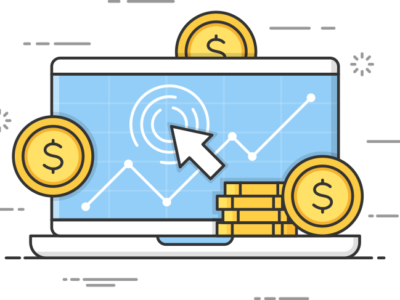Full-fledged marketers know better than to think that search engine optimization (SEO) and search engine marketing (SEM) operate in a silo, as if they don’t affect one another, however indirectly. The misconception that SEO and SEM are unrelated principles of digital marketing may be due to the very difference that defines them: SEO is unpaid search, while SEM typically refers to paid search.
Truth is, even Google recognizes that SEO and SEM are intertwined in ways that are too vital to ignore as you’ll be learning in this post.
The Interplay Between SEO and Paid Search
There are different aspects in online advertising, which prove that SEO affects SEM and vice-versa. Here are some of the key ways they operate in tandem:
-
Higher clickthrough rate (CTR)
One of your goals as a marketer is to get more and more people to click on your link to view your ad. A strong performance on organic search – which means search engines are ranking or showing your site on the top of the search engines results page (SERP) – can pave way for an increase in your ads’ CTR.
Similarly, bidding for your ad to be shown above organic results on SERPs can improve your site’s organic ranking by way of getting 20% more clicks.
You don’t need rocket science skills to figure out that showing up twice – on organic and paid results – means more exposure for your brand and more traffic to your site.
-
Increased keyword data
Digital marketing is very much data-driven. You’ll need to constantly gather and analyze your online data from various channels to determine how you’re doing in your marketing efforts.
SEO and SEM can be great sources of data, especially when it comes to the use of keywords. Since keyword data can tell you how target market is using search to find information, products, or services, this can shape your content marketing campaigns to become more targeted and aligned in the future.
This is especially true if you implement consistency, continuity, and coordination in your branding messages.
-
Inbound marketing
Before we discuss how SEO and SEM affect inbound marketing, let’s first get to the bottom of what each one means or what it covers.
SEO focuses on increasing the online visibility of your site through the use of meta data, proper formatting, quality content, linkbuilding, and the like. Search engines then rank your page by focusing on codes, usability, and relevance of your website. In SEO, the goal is to draw users to your site without you paying for each click.
In the same manner, SEM aims to promote a website through a variety of techniques, but through paid advertising. You get ranked on SERPs depending on your bid or ad spend for a particular keyword and on your ad’s quality score.
Meanwhile, inbound marketing is the practice of attracting customers who may be possibly interested in your brand by serving them with relevant content, including ads, when they make a search on Google, Bing, or Yahoo.
Based on this definition, you could say that both SEO and SEM are part of inbound marketing (although some marketers would beg to differ on the premise that SEM is more outbound than inbound because you’re blasting a single message to multiple audiences – but let’s save that for another post).
In the context of inbound marketing, data from your pay-per-click (PPC) ads and organic search can help you set goals and develop an effective campaign. This is one of the tactics that incorporates advanced SEM strategies to help you gain more page views for certain keywords in your content that you’re trying to rank for.
And when you track organic users’ engagement metrics – such as average time spent on your site – it can help you gain valuable insights on the quality of users from various sources like search, social media, and email.
-
Landing page optimization
A key aspect of Conversion Rate Optimization (CRO) focuses on improving the quality of your landing pages, which are stand-alone web pages dedicated mainly for advertising a specific product or service that you’re offering to consumers. Naturally, this aspect of CRO is highly relevant to both SEO and SEM.
You could start your SEO campaign with a technical audit to make sure that the codes on your website are working as they should and that there are no issues on your website, such as pages that don’t load properly or that take too long to load. You’ll want your website to be user friendly, as it helps increase your visibility on search results. Ultimately, an SEO audit can help you optimize your landing pages, drive traffic to your site, and help you hit your conversion goals.
On the other end of the spectrum, for SEM, improving landing page quality usually results in positive user engagement or high conversion rates for your ads. More traffic and a better overall experience on your website will mean you’ve got a better chance of driving links and social signals, which can work wonders for SEO visibility.
The bottom line here is that the same benefits you get from optimizing your landing pages can circle back to your organic search, where it all began in the first place.
-
Brand recall
Launching your brand or website is no mean feat. You might need to spend a significant amount on advertising through PPC, so you could be found more quickly and easily on Google.
Here’s some good news: consumers are 80% more likely to have top-of-mind awareness of your brand for category keywords after they’ve been shown your search ad. In a meta-study run Google and Ipsos MediaCT, consumers who were exposed to a test brand’s search ad were 80% more likely to recall that brand first when the same category keyword comes to mind.
The reason for this is that people use search when they’re already in a highly-receptive mindset. When a brand manages to appear at the forefront of that category, there’s a strong chance they’ll remember that brand and be able to search for it organically.
Wrap-up
It’s quite a paradox that SEO and SEM are as different as can be, and yet, they also complement each other extremely well. This only redounds to the fact that proper, coordinated strategies that integrate both organic search and paid ads can boost your company’s success rate in the search marketing department.
If marketing teams go in this direction, the connection between SEO and SEM would be stronger than ever, allowing complementary efforts to be maximized.
In conclusion, integrating both SEO and SEM strategies is essential for maximizing your company’s search engine marketing in the Philippines. By leveraging the synergy between organic search optimization and paid advertising, you can achieve higher visibility and better results in the local market. Let’s collaborate to craft a tailored approach that ensures your brand stands out in search engine marketing in the Philippines.






